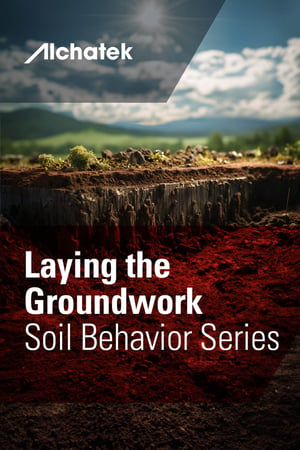
 Soil, in its seemingly simplistic form, conceals a vast universe of complexity beneath its surface. As the very bedrock upon which humanity has built civilizations, its importance cannot be understated. This foundation of every structure holds secrets, each granule and layer telling tales of time, pressure, and the ever-evolving processes of Earth.
Soil, in its seemingly simplistic form, conceals a vast universe of complexity beneath its surface. As the very bedrock upon which humanity has built civilizations, its importance cannot be understated. This foundation of every structure holds secrets, each granule and layer telling tales of time, pressure, and the ever-evolving processes of Earth.
The Components of Soil
To begin, one must recognize the ingredients that constitute soil. Soil is not just "dirt." It is a harmonious blend of minerals, organic matter, water, and air. Each component plays a pivotal role in determining the soil's overall behavior.
- Minerals: These primary solid components, derived from weathered rocks, give soil its texture. Depending on the relative proportions of sand, silt, and clay, soils are classified into various types like sandy, silty, or clayey.
- Organic Matter: Comprising decomposed plants, animals, and microbial entities, organic matter enriches the soil, enhancing its fertility and water retention capacity.
- Water: Present in the spaces between soil particles, water plays a significant role in the soil's compaction, strength, and ability to support structures.
- Air: Just as essential as water, the air in the soil provides the necessary oxygen to plant roots and soil organisms, influencing the soil's overall health.
The Physical Properties of Soil
Once acquainted with the components, a deeper dive into the physical properties of soil is warranted:
- Texture: As mentioned, texture stems from the relative percentages of sand, silt, and clay in the soil. This property affects aeration, drainage, and the soil's ability to retain moisture.
- Structure: This refers to how soil particles bond and aggregate together. Granular, platy, blocky, and columnar are some structural forms. A soil's structure can influence root penetration, water movement, and aeration.
- Porosity: Alluding to the spaces between soil particles, porosity dictates how quickly soil can absorb water and how much it can retain.
- Density: Soil density impacts its ability to support structures. Two types are noteworthy: bulk density (the mass of dry soil per unit volume, including air space) and particle density (the mass of particles per unit volume).
- Color: While seemingly aesthetic, soil color can indicate its composition and fertility. Darker soils, for instance, tend to be more organic-rich.
Mechanical Behavior and Soil Strength
The mechanical behavior of soil is of prime importance to geotechnical engineers. A soil's response to stress, its ability to compact or shear, and its overall strength, govern the stability of structures built upon it.
- Shear Strength: This is a measure of soil's ability to resist shearing forces. It is influenced by factors like cohesion (internal molecular attraction) and friction between soil particles.
- Consistency: Referring to a soil's firmness or plasticity, it's an indicator of its water content. Terms like hard, firm, plastic, or liquid are used to describe the soil's consistency.
- Compressibility and Consolidation: Under external pressures, soils tend to compress. Compressibility is a measure of this behavior. Over time, water is expelled from the soil, leading to consolidation and further settlement.
Chemical and Biological Properties
Beyond the physical and mechanical aspects, soils are bustling ecosystems. The chemical interactions within soil dictate nutrient availability, pH levels, and more. Microorganisms, fungi, and various fauna contribute to organic matter decomposition, soil aeration, and nutrient cycling.
- pH Levels: Soils can be acidic, neutral, or alkaline. The pH level influences the solubility of nutrients and affects microbial activity.
- Cation Exchange Capacity (CEC): An indicator of soil fertility, CEC measures the soil's ability to retain and exchange positively charged ions (cations).
- Microbial Activity: Soil teems with life. Bacteria, fungi, and other microorganisms play essential roles in breaking down organic matter, fixing nitrogen, and maintaining soil health.
Soil, often taken for granted, is a marvel of nature. Its complexities underpin the very structures humanity erects, the food that is cultivated, and the ecosystems that thrive. By understanding its behavior and properties, we don't just become better builders or farmers, but more informed stewards of the land. As the foundation of life, understanding soil becomes not just a scientific endeavor but a necessary step in ensuring a sustainable future.


